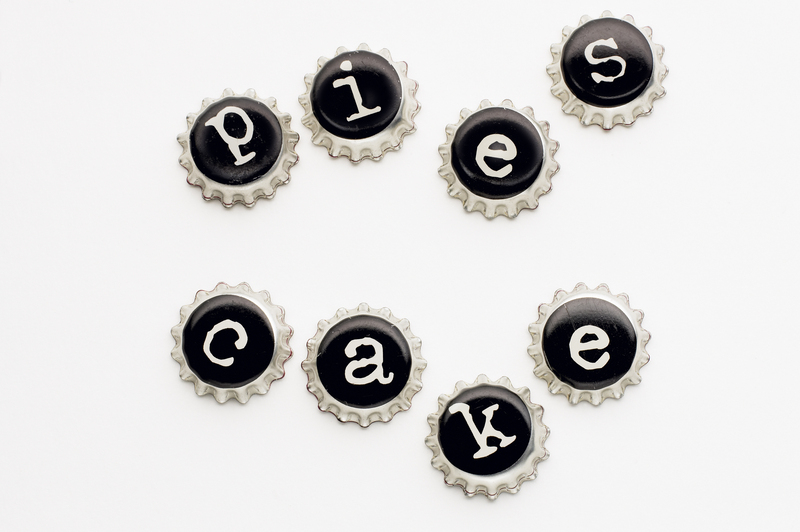Tips for Donating, Disposing, and Recycling Pots and Pans
Replacing old cookware can refresh your kitchen and improve meal preparation, but it also raises the important question: What should you do with your old pots and pans? Mindlessly tossing them in the trash can be wasteful, environmentally damaging, and, in some cases, even prohibited. There are many responsible, eco-friendly, and even charitable alternatives. In this comprehensive guide, we'll explore the best tips for donating, disposing, and recycling pots and pans--so you can downsize your kitchen clutter while making a positive impact on the world around you.

Why Responsible Disposal of Pots and Pans Matters
Before discussing how to recycle, dispose of, or donate cookware, it's important to understand why this process matters:
- Environmental Impact: Most pots and pans are made from metals like aluminum, stainless steel, or copper. These materials take decades or centuries to decompose in landfills but can be efficiently recycled.
- Reducing Waste: By keeping usable cookware out of landfills, you help conserve resources and reduce pollution.
- Supporting Community Needs: Many organizations welcome the donation of gently used cookware, helping individuals and families in need.
- Legal Regulations: In some areas, there are specific rules about how to dispose of metals and household goods. Responsible action ensures you avoid fines.
Are Your Pots and Pans Ready to Leave Your Kitchen?
Before you recycle or donate pots and pans, examine them to determine their suitability for a new life:
- Usable Condition: Do the handles and lids fit securely? Are there any cracks, holes, or heavy rust?
- Non-stick Coatings: If non-stick coatings are deeply scratched or peeling, recycling is the safest option since damaged coating can be unhealthy.
- Material Type: Most pots and pans are metal, but some have wooden, rubber, or plastic elements. This affects how and where you recycle them.
- Authenticity: High-end cookware like cast iron, copper, or branded pots may have more value through donation or resale.
Quick Checklist:
- Is the cookware safe and in decent condition?
- Does it have sentimental or resale value?
- Is it hazardous (broken glass, flaking Teflon)?
1. Donation: Give Your Cookware a Second Life
Where to Donate Pots and Pans
Donating is an excellent way to ensure your old pans and pots benefit someone else. Options for donation include:
- Local Thrift Stores: Organizations like Goodwill, Salvation Army, or local church-run stores often accept gently used cookware.
- Shelters and Community Centers: Homeless shelters, women's refuges, and transitional housing can always use extra kitchen items.
- Food Pantries: Some food distribution centers need cookware to help those they serve cook meals at home.
- College Dorms: Some universities run programs for students in need, which may welcome small kitchen essentials.
- Online "Buy Nothing" Groups: Platforms like Facebook Marketplace or Freecycle are ideal for giving away usable pots and pans locally.
How to Prepare Pots and Pans for Donation:
- Clean thoroughly to remove food residue, grease, and stains.
- Check for cracks, broken handles, or sharp edges, and only donate safe, functional items.
- Bundle with utensils or lids if you can--complete sets are especially appreciated.
- Contact the organization first to confirm they accept cookware and to check their requirements.
Tip: If your kitchenware is unusual (such as oversized stockpots, specialty pans, or restaurant-grade skillets), ask local soup kitchens or community centers if they can use them!
2. Recycling Pots and Pans Responsibly
Why Recycle Old Cookware?
Recycling is the best choice for pots and pans that are damaged, heavily worn, or unsafe for further use. Most metal cookware is highly recyclable and reprocessing it saves energy compared to mining virgin ores. Recycling old frying pans, saucepans, and metal cookware keeps valuable materials in the supply chain and reduces landfill waste.
Where to Recycle Pots and Pans
- Local Scrap Yards: Most metal recyclers accept cookware made of iron, steel, copper, aluminum, or stainless steel. Remove as much plastic, glass, or rubber before recycling.
- Municipal Recycling Centers: Many cities have household recycling drop-off points or special collection events for metal goods.
- Retail Recycling Initiatives: Some kitchenware brands or big-box retailers offer in-store take-back programs where you can return old cookware for recycling.
- E-Waste Pickup (For Electric/Induction Cookware): If your pans are electronic or induction types, use e-waste services to recycle electrical components properly.
How to Prepare Cookware for Recycling:
- Remove plastic handles, screws, or knobs--these can't always be recycled with metals.
- Wash thoroughly to eliminate oil and food residues which can contaminate recycling.
- Bundle similar metals together, if possible, to help scrapyards process your donation more efficiently.
- Check local guidelines, as some communities require special steps or collection points for certain cookware materials.
Note: Non-stick pans have Teflon or ceramic coatings. Some recyclers will accept them as-is, but many request you strip off the handles or bring only uncoated metal cookware. Always contact your local recycling service beforehand.
3. Proper Disposal: When to Trash Pots and Pans
Although recycling and donation are preferred options, there are cases where disposal is the only option:
- Severely damaged cookware: Deep rust, warping, holes, or missing parts make reuse or safe recycling impossible.
- Toxic or hazardous coatings: Cookware coated in lead or Teflon flaking into food is not safe for reuse or recycling in all facilities.
- Glass or ceramic cookware: These materials are not as easily recycled as metals and, if broken, can't be donated safely.
Safe Methods for Disposing of Cookware:
- Check city regulations: Many areas offer "bulk trash" services or designated drop-off days for hazardous household goods.
- Wrap and label dangerous items: Broken pans, sharp metal edges, or shattered pieces should be carefully wrapped and labeled to prevent injury to sanitation workers.
- Never place in standard recycling bins: If your pots and pans aren't accepted by local recyclers, place them in the landfill waste only as a last resort.
- Research hazardous waste facilities: In some cases (e.g., non-stick coatings with PFOA), there are specific collection sites.
Tip: Contact your local waste management authority for up-to-date information on safe cookware disposal in your region.
Creative Ways to Repurpose Old Pots and Pans
Not all cookware is destined for the landfill or recycling bin! If you're feeling crafty, there are many ways to repurpose old kitchenware:
- Planters: Turn old pots into quirky garden planters for herbs and flowers--just drill a drainage hole if needed.
- Storage: Use deep pans to organize tools, craft supplies, or gardening gear in the garage or shed.
- Art Projects: Paint or mosaic an old lid for wall art, or make a hanging wind chime from several pans and kitchen utensils.
- Pet Bowls: Small, shallow pans can become water or food bowls for pets (clean thoroughly first).
- Bird Baths/Feeders: Turn sturdy pans into garden bird baths or feeders with minimal effort.
Feeling stuck for ideas? Online communities like Pinterest or DIY blogs are abundant sources for upcycling inspiration--your old pots and pans might have a second life as cherished decorative or functional items.
FAQs: Donating, Disposing, and Recycling Cookware
Can I put pots and pans in the household recycling bin?
Usually, no. Most curbside programs don't process large pieces of metal or cookware coatings. Use local scrap metal facilities or collection points instead.
Are non-stick pans recyclable?
It depends. Some scrap yards accept non-stick pans, but many request you remove the coating or only bring uncoated metal. Always check first with your local recycler.
What about cast iron or copper cookware?
Both are highly valuable for recycling or donation. Seasoned cast iron can be restored and reused for generations, and copper is sought after at scrap yards. If in good condition, consider giving these pans a new life via donation or resale.
Do thrift stores accept old pots and pans?
Yes, if they're clean and safe for use. Heavily scratched non-stick coatings or broken cookware are generally not accepted.
Essential Do's and Don'ts for Getting Rid of Old Pots and Pans
- DO clean and inspect items before donating or recycling.
- DO remove non-metal elements (handles, knobs, lids) when recycling.
- DO call ahead to confirm that charities or recyclers will accept your items.
- DON'T throw good cookware in the trash if it can be reused by someone else.
- DON'T discard broken or hazardous pans in regular recycling or donation bins.
- DON'T overlook the value of upcycling or creative repurposing!

Summary: The Smart Way to Clear Out Old Pots and Pans
Tackling your old cookware doesn't have to be wasteful or stressful. With these tips for donating, disposing, and recycling pots and pans, you can keep your footprint light on the planet and make a difference in your community. Remember:
- Donate usable pans to families, charities, or thrift stores in need.
- Recycle metal cookware at designated scrap yards or recycling facilities.
- Dispose of non-recyclable or hazardous pans safely, following local regulations.
- Get creative with upcycling for practical or artistic new uses around your home and garden.
Next time you update your kitchen, you'll be ready to part with your old cookware in the most responsible and rewarding ways possible!
Further Reading and Resources
- EPA Household Waste Management Guide
- Goodwill Donation FAQs
- Find a Local Scrap Yard
- Find Local Freecycle Group
- Upcycling Ideas for Pots and Pans
By following these detailed, practical, and eco-conscious strategies for donating, disposing, and recycling cookware, you'll ensure your old pots and pans enjoy a worthy and environmentally-friendly second life.